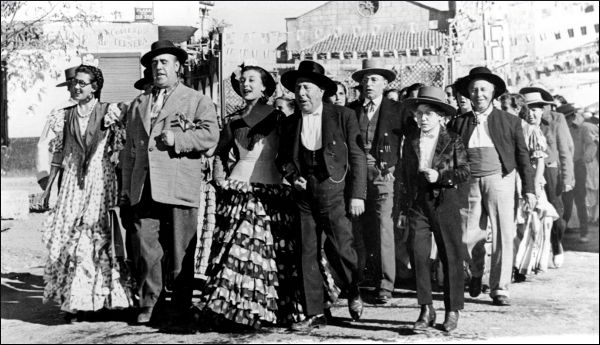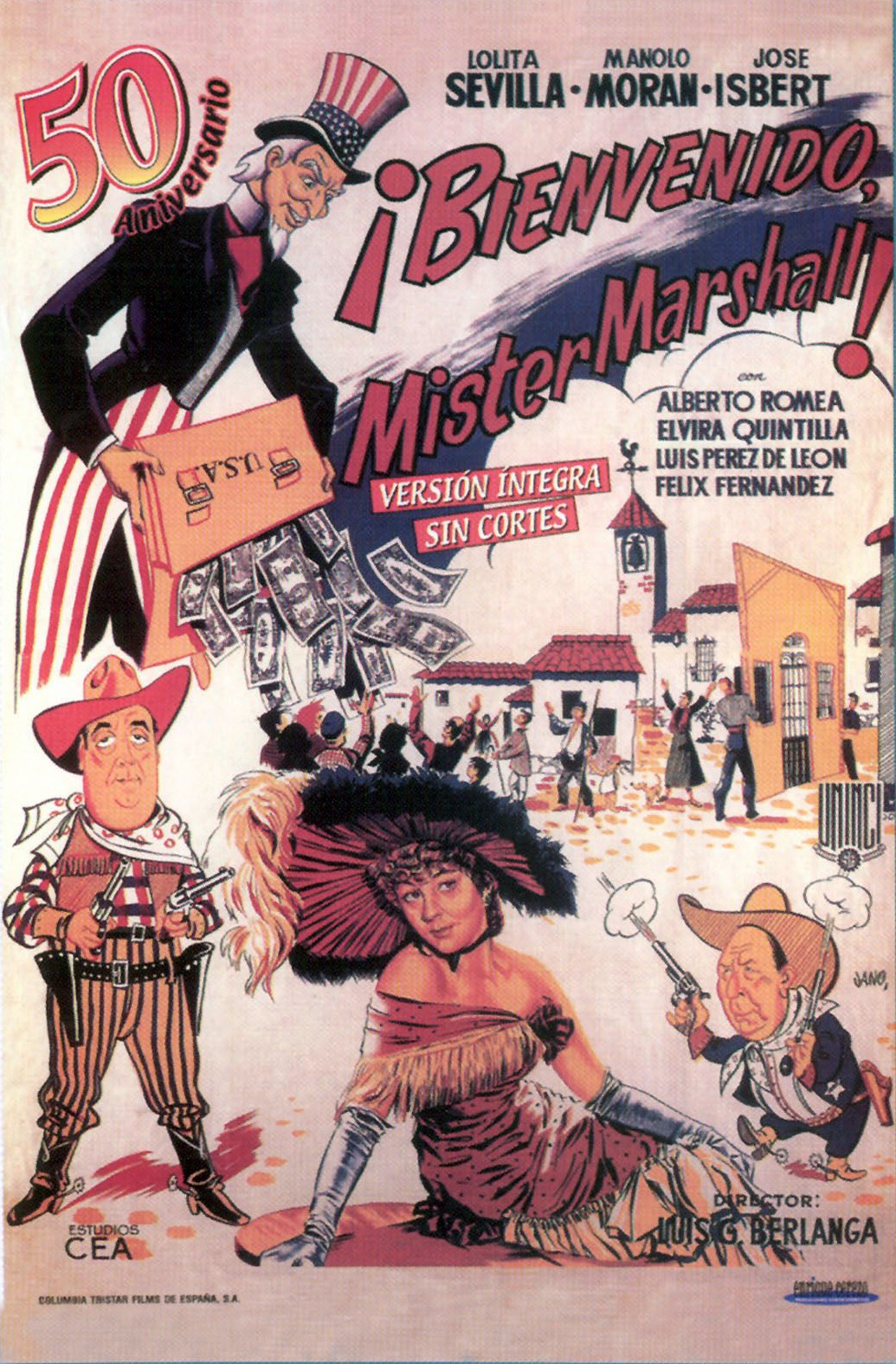One of the great classics of Spanish cinema, ¡Bienvenido Mr. Marshall! (Welcome Mr. Marshall!) is a biting satire that skewers every target imaginable: Spanish citizens, the government, the church, and even the United States. It came out in 1953, in the midst of General Franco’s dictatorship, and it’s still a matter of debate how exactly this movie, directed by Luis García Berlanga and written by Juan Antonio Bardem, survived state censorship. According to author and film director Kepa Sojo, who wrote a book on the film, the censors were simply not smart enough to notice the subversive themes, and when the movie screened to great critical acclaim at the Cannes Film Festival, the Spanish government was forced to accept it in order to demonstrate that Spain did not censor its art. Which, of course, it did. Just not this time.
Nowadays, Welcome Mr. Marshall! comes up whenever the best Spanish films ever made are discussed. It’s set in a quiet, traditional Spanish town, which sees itself transformed when news arrive that an American delegation will be stopping there to represent the Marshall Plan, the United States program to reconstruct Europe after World War II. Spain had been left out of the Plan, so when word comes in that “the Americans are coming,” many suppose that, at long last, they will enjoy the benefits of foreign investment.
"One of the great classics of Spanish cinema, a biting satire that skewers every target imaginable: Spanish citizens, the government, the church, and even the United States."
In order to receive the delegation and earn its favor, everyone in the town – from regular folk to the mayor and the local church authority – starts planning a ridiculous welcome party. Since the image most Americans have of Spain is likely based on clichés about Andalucía – which is now one of the country’s 17 autonomous communities – the characters, who are relatively austere Castilian farmers, don the colorful dresses and flowing skirts of flamenco dancers and the tight vests and breeches of bullfighters. They even erect fake wooden walls and narrow arcades with arched columns and ornate street lamps, all to give their town a more romantic Andalusian look. During this charade, the townspeople agree to help because, supposedly, if the reception is memorable enough, the Americans will put money into the town and everyone will enjoy his or her proper reward.

Much of the humor arises from the clash between the dishonest wordiness of the town’s authorities and the matter-of-factness of the rural inhabitants. In one brilliant scene, common men and women line up to ask for presents in return for their hard work remodeling the town and their wardrobe. Behind a table, the local authorities write down each wish and promise to procure it after the Americans – and their dollars – show up. One man wants a cow. Another asks for a carriage. An old man doesn’t think he wants anything. “Nothing” – he repeats in a raspy voice – “What do I know?” He then fumbles over a couple of choices and finally settles on a “clarinet.” These characters are stereotypical country people, simple and straightforward, rather unlike their more long-winded, verbose leaders.
"Much of the humor arises from the clash between the dishonest wordiness of the town’s authorities and the matter-of-factness of the rural inhabitants."
In the most celebrated scene in the movie, the mayor stands on the balcony of his government building and speaks to his constituency on the main plaza. Hilariously, his pompous speech gets stuck in a loop: “Como alcalde vuestro que soy, os debo una explicación, y esa explicación que os debo, os la voy a pagar. Que yo, como alcalde vuestro que soy, os debo una explicación, y esa explicación que os debo...” and so on, until he’s stopped by the other men in the balcony. Translated, it reads: “As your mayor, I owe you an explanation, and that explanation I owe you, I will give it. Because I, as your mayor, owe you an explanation, and that explanation I owe you…” The Spanish here is very formal and dry, and the fact that the speech loops like a broken record suggests the mayor doesn’t really know what he’s saying. Another man, who is standing next to him, completes the interrupted speech with platitudes about the “noble town” being “honored by the whole world,” which is simply a more competent version of the mayor’s nonsense. The political and religious leaders, in this movie, don’t answer to the people, only to their own dreams of grandeur. So iconic has the looping speech become, that a statue of Pepe Isbert, who played the mayor, was erected in 2011 on the very same balcony in the town of Guadalix de la Sierra where the film – and the scene – was shot.





